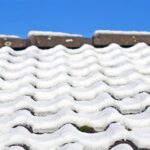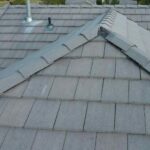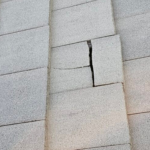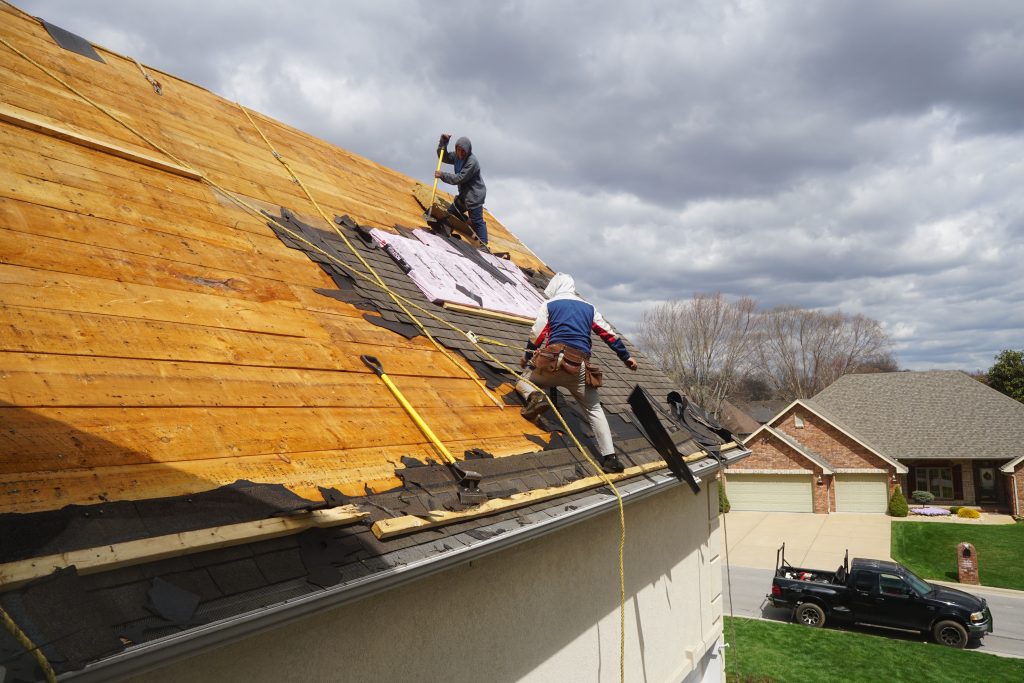
It’s essential to know when is the right time for a shingle roof replacement as one of the most critical components of your home’s protection is your roofing. A shingle roof is a popular choice among homeowners due to its durability and affordability. However, like any roofing material, shingle roofs have a lifespan, and eventually, they need replacing.
In this article, I will discuss the importance of shingle roof replacement, signs that indicate it’s time for replacement, benefits, the process, choosing the right shingle, cost factors, DIY vs. professional replacement, tips for maintenance after replacement, and frequently asked questions.
Skilled Roofers in Henderson, Colorado for your Roofing Needs
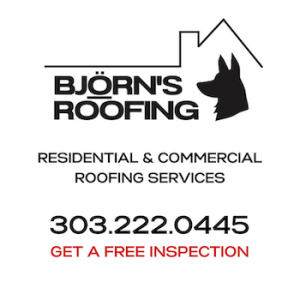
Understanding the Lifespan of Shingle Roofs
The lifespan of a shingle roof depends on various factors, including the quality of the shingles, installation, weather conditions, and maintenance. Most shingle roofs last between 15 to 25 years. However, some high-quality shingles can last up to 50 years:
- Asphalt shingles: Due to their low cost and simplicity of installation, these are the most preferred option among homeowners. Typically, asphalt shingles last 20 to 30 years.
- Architectural shingles, also referred to as dimensional or laminate shingles, are an attractive and more long-lasting alternative to conventional asphalt shingles. The lifespan of architectural shingles can range from 30 to 50 years.
- Wood shingles: Constructed from raw woods like redwood or cedar, wood shingles have a charmingly rustic appearance. They last between 25 and 30 years, although they need more upkeep than other kinds of shingles.
- Metal shingles: While still uncommon, metal shingles are becoming more and more popular because of their strength and energy efficiency. Metal shingles have a lifespan of at least 50 years.
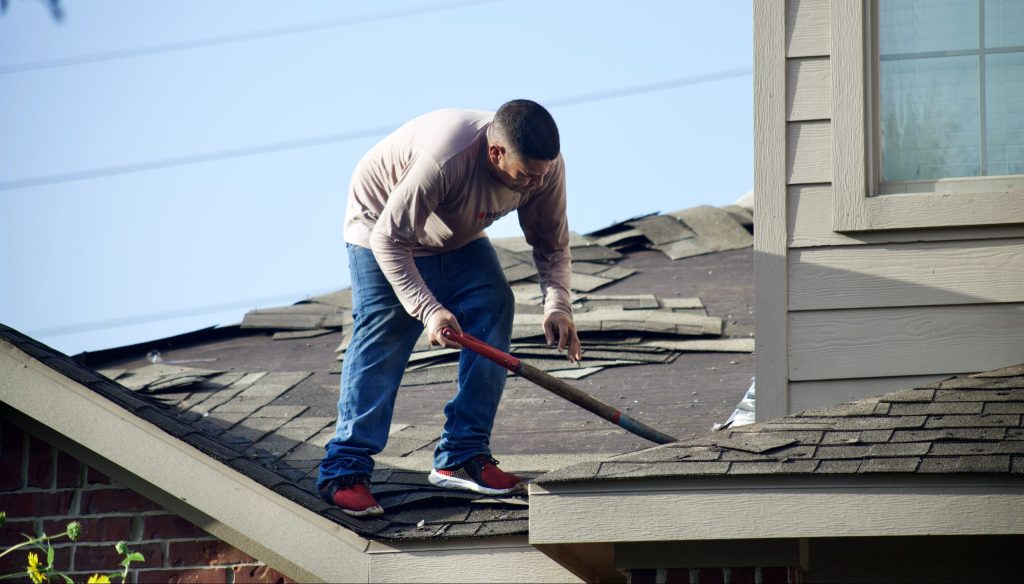

It’s essential to know when your shingle roof is reaching the end of its lifespan. If you’re unsure, a professional roofer can inspect your roof and assess its condition. It’s better to replace your shingle roof before it develops significant problems that can damage your home’s interior or structure.
When is it time for a Shingle Roof Replacement?
There are several warning signs that indicate it’s time to replace your shingle roof. The most obvious sign is visible damage or wear and tear on the shingles. If you notice missing, cracked, or curled shingles, it’s time for a replacement. Here are some telltale signs that you may be in need of a shingle roof replacement:

Curling, Clawing, and Cracking Shingles
When shingles begin to cup, their edges begin to curl upward. Eventually, the shingle will resemble a cup. Clawing on the other hand is when the shingle’s core starts to protrude upward. Cracking is as its name suggests, having cracks.
In any of these situations, the damaged shingle presents a hole for water to enter your roof deck and maybe lead to a leak. You can generally avoid replacing shingles if you just see a few of them curling. However, if your roof has shingles that are curled all over it, its best to get a shingle roof replacement.
Missing Granules and Bald Spots
To shield the asphalt layer from heat and ultraviolet rays, asphalt shingles are covered with tiny stone granules. These granules may become loose and flake off over time, leaving your roof open to harm.
Other times, loose granules can happen after hailstorms and if debris fall on your roof. Check for granules in your gutters and look for bald spots on your roof to see if it’s time for a shingle roof replacement.
Age of the Roof
An asphalt shingle roof typically lasts between 20 and 30 years. It’s crucial to arrange a professional examination if your roof is getting close to this age range in order to evaluate its condition and decide whether it needs to be replaced.
Moss Overgrowth
Moss in general is not a huge problem and can be simply cleaned up. However, when you have an overgrowth, it can start growing under the shingles and start pushing them upwards. It can also retain moisture on your roof and over time also cause granule damage.
Other signs include water damage or leaks in your attic, mold or mildew growth, and visible granules in your gutters or downspouts. If you notice any of these signs, it’s crucial to contact a professional roofer immediately.
Benefits of Shingle Roof Replacement
Replacing your shingle roof has several benefits. First, it protects your home from water damage and leaks, which can lead to costly repairs. Second, it improves your home’s energy efficiency, reducing your energy bills. Third, it enhances your home’s curb appeal, increasing its resale value. Finally, it provides peace of mind, knowing that your home is protected for years to come.
The Process of Shingle Roof Replacement
The process of shingle roof replacement involves several steps. First, the old shingles are removed, and the roof decking is inspected for damage. Second, any damaged or rotten wood is replaced. Third, underlayment is installed to protect against water damage. Fourth, the new shingles are installed, and flashing is added around roof penetrations.
The entire process takes between one to three days, depending on the size of your roof and weather conditions. It’s essential to hire a licensed and insured professional roofer to ensure that the work is done correctly. Once you’ve decided it’s time for a roof replacement, there are several steps you should take to prepare for the project:
- Obtain Necessary Permits: Consult with your roofing contractor to ensure all necessary documentation is in order.
- Clear the Surrounding Area: Remove any items near your home that could be damaged during the roof replacement process.
- Notify Your Neighbors: The upcoming project can be noisy and may temporarily disrupt their daily routines.
The Importance of Regular Roof Inspections
To prolong the life of your shingle roof and detect issues early, it’s essential to schedule regular roof inspections. Experts recommend having your roof inspected at least once every three years, or more frequently if your roof is nearing the end of its lifespan.
- Catching Minor Issues Before They Become Major Problems
- Assessing the Overall Condition of Your Roof
- Identifying Potential Hazards
Factors That Affect the Cost of Shingle Roof Replacement
The cost of shingle roof replacement varies depending on several factors, including the size of your roof, the type of shingle, the complexity of the installation, and the location. On average, shingle roof replacement costs between $5,000 to $10,000. However, this can vary depending on your specific needs.
It’s essential to get multiple quotes from licensed and insured roofers to ensure that you’re getting a fair price. Additionally, some homeowners’ insurance policies may cover the cost of shingle roof replacement.
DIY vs. Professional Shingle Roof Replacement
While it may be tempting to save money by replacing your shingle roof yourself, it’s not recommended. Shingle roof replacement is a dangerous and complex process that requires specialized equipment and expertise. Additionally, amateur installation can lead to improper installation, leading to leaks and other damage.
It’s crucial to hire a licensed and insured professional roofer with a proven track record of quality work. They have the skills and experience to ensure that your shingle roof replacement is done correctly and safely. When it’s time for a roof replacement, choosing the right roofing contractor is crucial. Here are some tips to help you find a reliable and experienced professional:
- Research Local Roofing Contractors
- Verify Licenses and Insurance
- Ask for References
- Obtain Multiple Quotes
Tips for Maintaining Your Shingle Roof After Replacement
After your shingle roof replacement, it’s essential to maintain it properly to ensure its longevity. Regular maintenance includes cleaning gutters and downspouts, removing debris from the roof, and inspecting for damage or wear and tear. Additionally, it’s essential to trim overhanging branches to prevent damage from falling limbs.
It’s also crucial to inspect your roof after severe weather events, such as storms or hurricanes, for any signs of damage. If you notice any damage, contact a professional roofer immediately.
Frequently Asked Questions About Shingle Roof Replacement
Q: How long does shingle roof replacement take?
A: Shingle roof replacement takes between one to three days, depending on the size of your roof and weather conditions.
Q: How much does shingle roof replacement cost?
A: Shingle roof replacement costs between $5,000 to $10,000, depending on several factors, including the size of your roof, the type of shingle, the complexity of the installation, and the location.
Q: Do I need to replace my entire roof if I have damaged shingles?
A: It depends on the extent of the damage. A professional roofer can inspect your roof and determine if replacement is necessary.
Conclusion
In conclusion, shingle roof replacement is a critical investment in your home’s protection and longevity. Understanding the lifespan of shingle roofs, signs that indicate it’s time for replacement, benefits, and the process are essential for making an informed decision.
It’s crucial to hire a licensed and insured professional roofer with a proven track record of quality work to ensure that your shingle roof replacement is done correctly and safely. Take the necessary steps today to protect your home’s future with a reliable and durable shingle roof replacement.
By entrusting your project to a qualified professionals like Bjorn’s Roofing, you can have confidence in the expertise and skills we bring to the table. Contact us today for a FREE inspection!
Latest Posts
Related: complete roof replacement cost, roof replacement process insurance, what is included in roof replacement, roof replacement timeline, things to consider when replacing a roof, repair or replace roof shingles, shingle roof installation, time to replace your roof, 50 year shingles, impact resistant shingles

